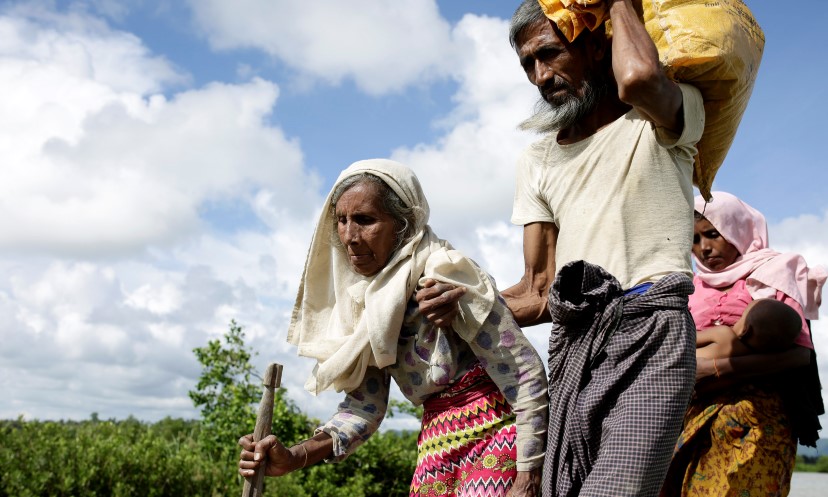The care challenge: Experience from Asia
Eduardo Klien, the East Asia/Pacific Regional Director for HelpAge International, discusses the care challenge in Asia.
 In Asia, we find nations at all stages of economic development, from those working to lift their populations out of poverty, such as Cambodia and Myanmar; to the emerging middle-income economies of China and Thailand; to highly developed Singapore, Korea and Japan. Similarly, we see countries that are amongst the most aged in the world, to others whose populations are only beginning to age. As a whole, by 2025 there will be 700 million people aged over 60 in Asia.
In Asia, we find nations at all stages of economic development, from those working to lift their populations out of poverty, such as Cambodia and Myanmar; to the emerging middle-income economies of China and Thailand; to highly developed Singapore, Korea and Japan. Similarly, we see countries that are amongst the most aged in the world, to others whose populations are only beginning to age. As a whole, by 2025 there will be 700 million people aged over 60 in Asia.
One area of urgent need for ageing populations is care, both social care and health care. As we age, we are more likely to experience health problems, become frail or have limited mobility, and have difficulties performing the activities of daily life, like shopping, cooking, and bathing. Older people may face problems with their memory which affect their ability to manage their finances or personal affairs. Coupled with their withdrawal from the workforce, these limitations in daily activities leave older people more susceptible to social isolation and poverty and in more need of support and care. This does not mean that all older people require care. In fact, the need for care in Asia is largely concentrated amongst the ‘older olds’ – those people in their mid-70s and 80s. Currently, there are more than 37 million people aged 80 and above in the region and their number is increasing rapidly.
Who provides care in old age?

In Asian countries, there are strong traditions of elder respect and familial responsibility and, historically, the family has been the main provider of care – often the exclusive provider.
Yet families themselves are struggling to come to grips with changes in society; for example, migration to the cities and neighbouring countries means many people are unable to stay behind to look after their parents.
The great successes of the 20th century of decreasing fertility and dramatically improved health and education, have led to smaller families, with fewer children to care for elders who are living longer.
Added to these changes are the effects of a globalised and mobile society, where people are no longer tied to the place where they are born. Across Asia, people of traditional working age are moving: from villages to towns, from towns to cities, and from developing countries to developed countries. More often than not, it is the older generations who are left behind.
This situation does not mean that the traditional family values of care are being abandoned, nor does it imply a lack of love or responsibility for older people by younger generations. It simply means that new and innovative strategies to bring traditional values into a modern world are required.
Residential homes or hospitalisation, while necessary in some cases, are not a blanket solution. They are not affordable on a large scale, nor are they in line with the wishes of most older people. The message from older people in Asia is that they want to ‘age in place’. This means growing old at home, in their communities, with their regular lifestyle maintained to the greatest possible extent. For example, a national survey by the Chinese Research Centre on Ageing found that 88.7 per cent of urban elderly and 87.5 per cent of rural elderly expressed a preference for ageing at home.
Community-based care
A critical issue is how to expand and enhance care provided in the community to help make ageing in place happen. Community-based care is a far less expensive strategy for providing long-term care than institutionalised responses, especially when those being cared for do not require intensive support with their daily activities.
One way of boosting the availability of community care across a number of Asian countries is through a culturally-appropriate model where care is provided by volunteers in the home of the older person. The volunteer services are often coordinated locally by a non-governmental organisation (NGO) or other civil society group. In several countries, governments have developed national policies or guidelines on volunteer-led home care that helps create a more enabling environment.
The impact that appropriate care can have cannot be under-estimated. While visiting poor communities in Battambang Province, Cambodia, I met a widow who had no children. She was involved with a home care programme, and volunteers visited her three times per week to help her with daily activities like cleaning and shopping. Her home was clean, and she was proud and happy. She spoke fondly of her home care volunteers and, despite her frailty, was eager to show me around her home.
In a different village in the same province, I met another older lady who was in a similar social and economic situation as the first woman I met. However, she was not in a care programme. She was depressed and inactive, and rarely had visitors to animate or support her. She told me that she was just waiting to die. Her isolation was crushing her spirit.
Providing appropriate care to older people requires many inputs and does not rely solely on volunteers. Other approaches to fill the care gap that cannot be met by volunteers are equally important. These could include provision of paid care workers, day-care centres for rehabilitation, short-stay in the community and social protection schemes targeting frail older people and their carers such as financial assistance and provision of assistive devices, etc.
While families continue to play an important role in providing care and it is older people’s wish to age in their own home and community, governments need to ensure that they are sufficiently supported through a clear policy, legal framework, action plan and allocation of human and financial resources for the implementation.
In many situations, providing care can be an opportunity for older people themselves to stay more active and healthy. We often see the ability, and willingness, of younger-olds (particularly those in their 60s) to care for older-olds.
Indeed, on some occasions, older-olds in better health even look after younger-olds in poor health. Older people themselves are thus part of the solution. Regardless of the approach, there are some basic elements we must consider to enable older people to access the home and community-based care they urgently need:
• Understanding the local context and the diverse care needs of older people.
• Promoting commitment, involvement and investment from governments and civil society.
• Linking care with existing health and social structures, and ensure that these systems operate in harmony.
• Providing standard training curricula and accessible training free-of-charge to those who volunteer to care.
• Supporting carers with respite and funding for their care related costs.
With commitment and innovation, solutions to meeting the care challenge are within the grasp of every developing nation, and we will all, the aged and the ageing, reap the benefits.
 Eduardo Klien is the East Asia/Pacific Regional Director for HelpAge International. He has more than 25 years’ experience in social and economic development. Eduardo has worked as Senior Adviser in the Ministry of Planning in Nicaragua and for Oxfam as Regional Manager for the Horn of Africa and Regional Director for Mexico/Central America. In 1997, Eduardo was appointed as a Visiting Research Fellow in the Department of International Development at the University of Oxford, and in 2007 he was appointed as a Research Fellow at the Oxford Institute of Population Ageing. For the last 15 years, Eduardo has been living and working in Asia, holding various senior management positions in Laos, Vietnam and regionally.
Eduardo Klien is the East Asia/Pacific Regional Director for HelpAge International. He has more than 25 years’ experience in social and economic development. Eduardo has worked as Senior Adviser in the Ministry of Planning in Nicaragua and for Oxfam as Regional Manager for the Horn of Africa and Regional Director for Mexico/Central America. In 1997, Eduardo was appointed as a Visiting Research Fellow in the Department of International Development at the University of Oxford, and in 2007 he was appointed as a Research Fellow at the Oxford Institute of Population Ageing. For the last 15 years, Eduardo has been living and working in Asia, holding various senior management positions in Laos, Vietnam and regionally.
 Follow us on Twitter
Follow us on Twitter
Stay up to date with the latest news, publications and features
